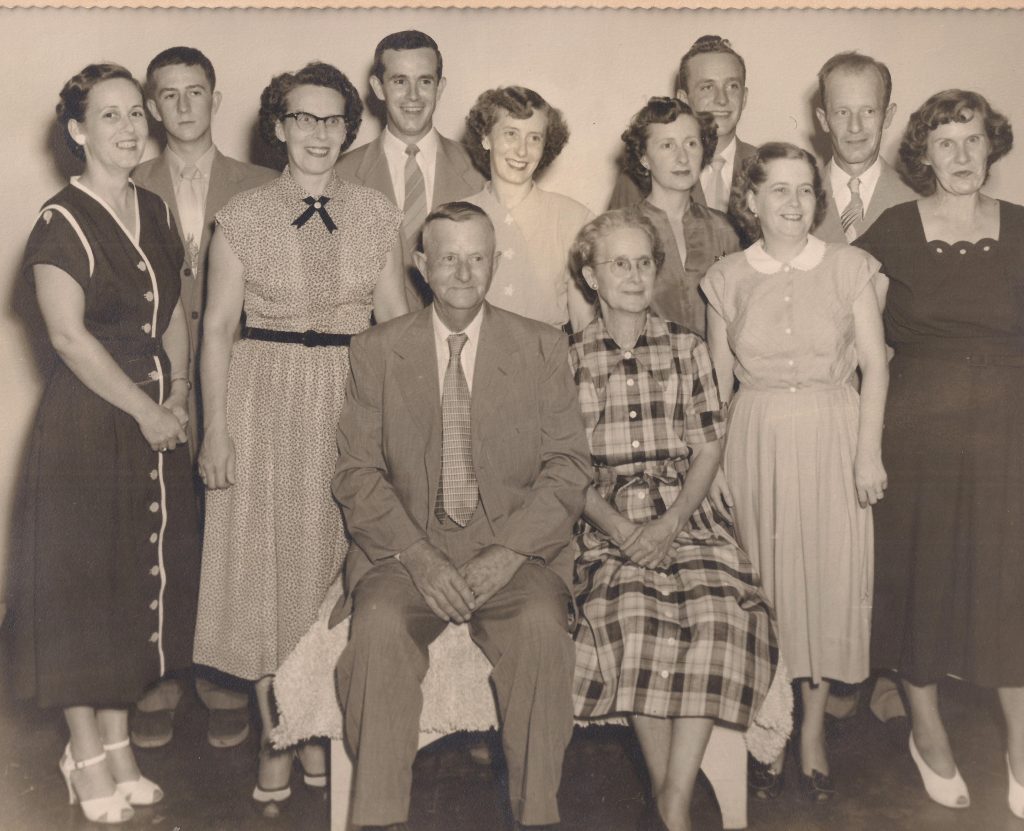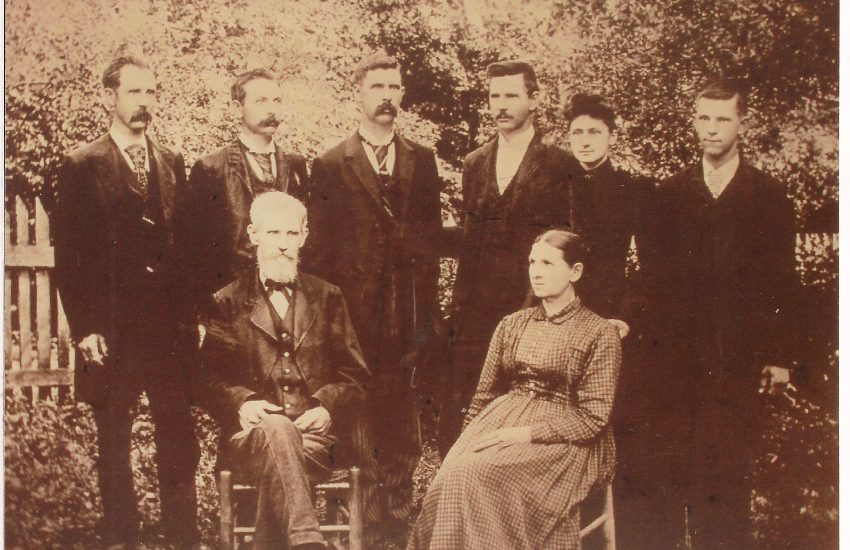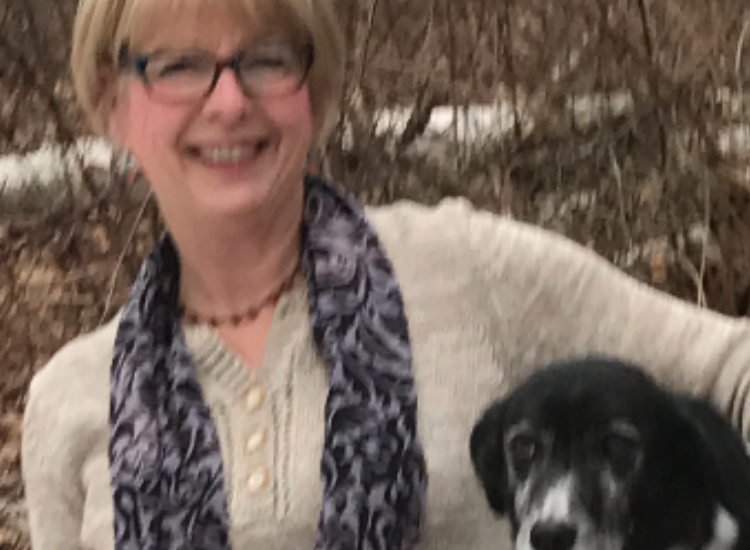The Jernigan Family

This story is dedicated to the memory of Nola Mae Needham who passed away on May 30, 2016 at the age 98 years. Her father once served as Mayor of the Town of Livingston as did Nola Mae’s husband, Raleigh. I was often a visitor in the Needham home over the years, and was fortunate enough to have both Raleigh and Nola Mae’s help with several stories I’ve written. Their son, Bill, and I have been good friends all our lives. Somes years ago, Nola Mae shared the following information with me about how it was to grow up in the 1920s in the small town of Livingston. Here are her memories:
“I was born October 2, 1917, in Livingston, Overton County, Tennessee. My parents were Maude Lee (Eldridge) and Luther Pleas Jernigan. In 1913, Daddy was transferred from the Brotherton depot in Putnam County to become depot agent in Livingston for the Tennessee, Kentucky and Northern Railroad. He served as agent until May, 1933, when the railroad was disbanded. Following the closing of the railroad, he was city alderman for several terms and then served as Mayor of Livingston for many years. He died at the age of 72 in 1957, and was serving as Mayor at the time.
“My parents built our house on Daugherty Street in 1920. It is the next to the last home on that street. Some time after, they built a large concrete front porch running the length of the front of the house. My father hired Harry Springs, a noted rock mason who, along with his wife Ada Roberts Springs, and their three daughters, lived on Rock Crusher Mountain. Mr. Springs quarried rocks from the bluff behind the depot for the front porch columns and the long steps leading to the porch. They are still in use today, and are as sturdy as the day they were put in place.
“Since we lived so near the mountain, it was only natural to explore it. There was a rock ledge not far from our back garden lot. We often played on the ledge and would swing on a strong grape vine. Sometimes on a hot summer afternoon, Mama would prepare a picnic and we would take it to the ledge to eat. That was always a special treat.
“My parents raised a big garden, vegetables of all kinds, plus a large plot for sweet potatoes. There was lots of work to do at potato planting time. Daddy would drop the slips and “heel” them in . Someone would water the plants, then they were covered. In the late summer or early fall was also a family working. Daddy would dig the potatoes and Mama would oversee the washing of them. They were left to dry for several days. The work was not finished, for the potatoes were then carried up the stairs, spread out, and when the weather got cold, they were covered to keep from freezing. There was a lot of good eating in the winter. It was good to come home from school, hungry, and find a pan with baked sweet potatoes in the warming closet of the big gray and white enameled Home Comfort range, ready to eat.
“Mama was an accomplished seamstress. She made most of our clothes. She was a wonderful cook, winning numerous first place blue ribbons at the local county fair for her buttermilk biscuits and her still famous chocolate pie.
“On Saturday nights, Daddy would always go to town to get the groceries or whatever was needed. Edith, Christine, and I wore white knee socks to church on Sundays. We attended and were active members of the First Methodist Church in Livingston. The silk socks were not very durable and would often get runs in them. When we would tell Mama through the week we needed new socks, she would send us to town and tell us to buy the more durable rayon socks. They were not as pretty as the silk ones, and we soon learned if we waited until Saturday night to discover we needed new socks, Daddy would buy the pretty silk ones.
“There was a lumber mill on the west end of Broad Street. It was known as the Medlock Mill. Everyday at noon and each afternoon at 4:00 p.m., the whistle would blow. When the whistle blew in the afternoon, the workers knew the days work was finished. If the whistle blew at an odd time, the townspeople knew something was wrong. One day we heard the whistle blowing and went outside. Misses Maude and Ova Speck’s house was on fire. It was a dreadful fire, completely destroying the entire house. We had no fire-fighting equipment at that time. One of the ladies had left an electric iron plugged in and it was thought to have tipped over, starting the fire. They had no way of re-building and the city built them a new house that they lived in for years and still stands. Another fire that stands out in my memory was the big barn directly behind our garden. The barn was owned by Mr. John Hargrove. It was thought green hay stored in the loft started that fire. Another time, one complete side of the square burned.
“On October 25, 1933, we were home from school for lunch when Daddy came running the house telling us to go outside, quick. When we went outside and looked up, we saw the giant German dirigible the “Graf Zeppelin”. It went slowly over our heads. It seemed as though we could reach up and touch it. Commanded by Dr. Hugo Eiskener, noted German pilot, it was en route from Miami, Florida to the World’s Fair in Chicago, Illinois, with 47 passengers aboard and a crew of 21.
“The owner of the Tennessee, Kentucky and Northern Railroad was Mrs. Phoebe Clark whose home was in Madison, Tenn. Mrs. Clark took over and ran the railroad after death of her husband. They had one son, Clinton Pennington Clark, known as Ted, who married Mamie Craig Wills. In the late 1920’s, Mrs. Clark built a home for Ted and Mamie Craig that was located on the mountain directly behind the depot. This house was eventually bought by John Hargrove for his daughter, Agnes Hargrove Smith, wife of Eddison Reeves Smith, and parents of John Hunter Smith. (This same home was later lived in by John Hunter Smith and June Davis.) Mrs. Phoebe would ride the motor car of the train from Algood to Livingston when she came from Madison to visit. She described the hills in this area as “green taffeta draped in mists of blue chiffon.” She was a well-educated, genteel, southern lady. Mama would have her eat with us when she visited. One day while visiting, she told Edith, Christine and me she would send us a tea set and when she came for a visit, she wanted us to have a tea party for her. When the tea set arrived, we were overjoyed to see a beautiful blue-bird pattern tea set large enough to serve real tea and cookies. Mama helped us make cookies and tea. We set a table up in the front hall and had, in Mrs. Clark’s words, “the most elegant party.” I still have the sugar bowl, creamer, and vegetable bowl from that special set of dishes. I treasure each one of them very highly.
“There was a circus owned by Haag Brothers that would periodically come to town. The elephants were walked from the railroad cars in Algood or Cookeville up the highway to Livingston. They would be led up to the east side of town where they were bathed and watered in Keaton Pond.
“The Overton County railroad running from Algood to Livingston was completed February 1, 1906. The train included two locomotives, a passenger car, a baggage car, and 20 box cars. The Overton County railroad never prospered, and on October 1, 1910, it was dissolved. On August 14, 1912, the Tennessee, Kentucky and Northern leased the railroad for a sum of $7,500.00 a year. This arrangement continued until the railroad’s dissolution.
“It was a sad day for the Jernigan family when the train pulled out for the last time. I shall never forget our family standing in our yard watching and listening to the whistle blowing continuously until it was out of hearing range. A page of history for Livingston and Overton County had turned for the last time.”
Both Nola Mae and Raleigh were members of the 1936 graduating class at Livingston Academy, and were the last two remaining members of their class prior to Raleigh’s death in August of 2015. Raleigh often laughed and said they could hold a class reunion most everyday in they wanted to since they were the only class members left. As often is the case with couples who are completely devoted to one another, the remaining partner doesn’t often live too long after the other has passed away. Their love and devotion to one another was evident to everyone who knew them. I am happy to be just one in the very large number of those they called friends.

